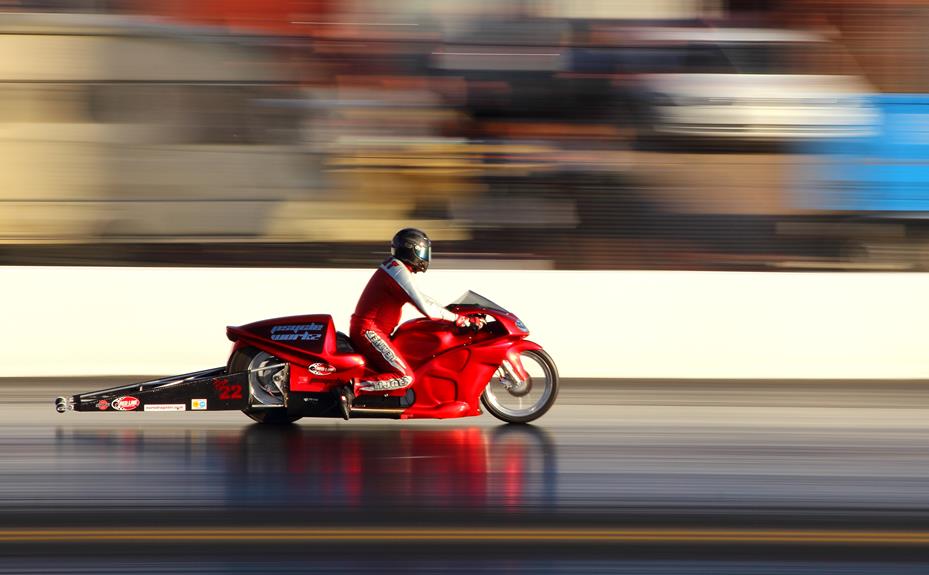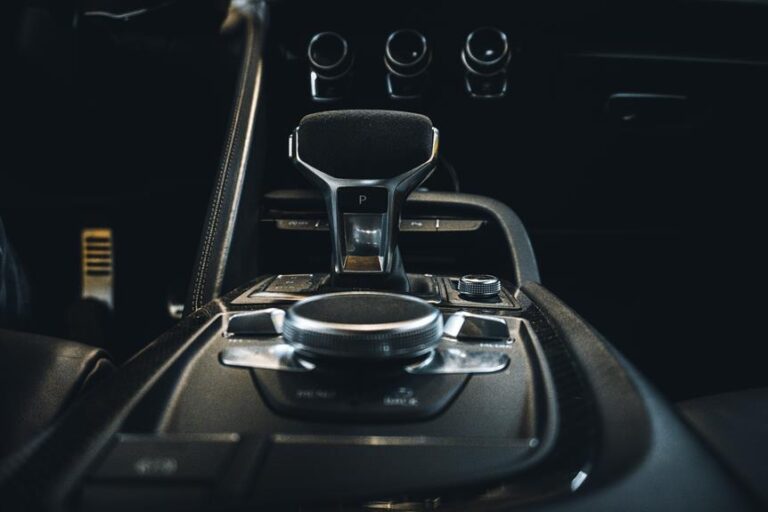Ultimate Traction: Choosing the Right Drag Racing Slicks
In the world of drag racing, traction is the holy grail. The right set of slicks can make the difference between victory and defeat. This article provides an in-depth exploration into the art of choosing the perfect drag racing slicks. We'll delve into the basics, evaluate different types, discuss crucial factors and maintenance, and review top brands. Gear up for a journey that will help you master the race track with ultimate traction.
Key Takeaways
- Drag racing slicks have a smooth, tread-less design for maximum contact with the track surface.
- The type of drag racing slick chosen can significantly impact performance in a race.
- Factors such as track conditions and vehicle specifications need to be considered when choosing drag racing slicks.
- Proper tire maintenance, including checking tire pressure and rotation, is crucial for optimal traction and performance.
Understanding the Basics of Drag Racing Tires
Frequently, the success in drag racing hinges on a solid understanding of the basic characteristics and optimal usage of drag racing tires. These tires, specifically known as drag racing slicks, are pivotal components that can significantly influence the performance and outcome of a race.
The principal attribute of drag racing slicks is their smooth, tread-less design. This unique characteristic maximizes the contact area between the tire and the track surface, thereby providing superior traction. An increased traction is paramount in drag racing as it enables the vehicle to accelerate rapidly from a stationary position without spinning the tires, which could result in loss of speed and time.
Additionally, the compound of the drag racing slicks plays a crucial role in tire performance. Typically, these slicks are made of soft rubber compounds to enhance grip, but they wear out faster than harder compounds. Understanding the balance between grip and tire longevity is essential for optimal tire selection and usage.
Equipped with these insights, one can make more informed decisions when choosing drag racing slicks. Let's delve deeper into the next section where we will be evaluating the different types of drag racing slicks.
Evaluating the Different Types of Drag Racing Slicks
Assessing the various types of drag racing slicks involves understanding their unique characteristics and how they can impact the performance in a race. High-performance tires are a crucial aspect of any competitive drag racing setup. They provide the necessary traction for optimal acceleration and stability, directly affecting the vehicle's ability to maintain control and speed during the race.
The first type to consider is the bias-ply slick. These are made of layers of rubber and fabric that overlap diagonally, providing flexibility and grip but less responsive handling. On the other hand, radial slicks have a more complex construction with a steel belt under the tread, offering superior traction and stability, but require a much more precise setup to perform at their peak.
Additionally, there are slicks designed for specific track conditions. Soft compound slicks, for instance, work best on a well-prepared track, while hard compound slicks are more suitable for less ideal conditions.
Factors to Consider When Choosing Drag Racing Slicks
How should one navigate the numerous factors when choosing drag racing slicks, and how do these considerations influence the overall performance on the track? The right selection of drag racing slicks is a fine balance influenced by a multitude of factors such as track conditions, vehicle specifications, and wheel alignment.
Track conditions, including surface texture and temperature, significantly affect the slick's ability to grip. A softer compound is ideal for colder, harder tracks, while harder compounds perform better on hot, softer surfaces.
Vehicle specifications, like weight and horsepower, also influence slick choice. Lighter vehicles with high horsepower require softer slicks for better traction, while heavier cars with lower horsepower can utilize harder compounds without sacrificing grip.
Wheel alignment, often overlooked, is crucial in determining the right slicks. Proper alignment ensures even tire wear, allowing for maximum contact and grip on the track. Misalignment can cause uneven wear, reducing traction and potentially causing handling issues.
Ultimately, the optimal slick selection hinges on a thorough understanding of these interplaying factors. By taking these into account, racers can liberate their performance potential, achieving the ultimate traction and the fastest times on the track.
How Tire Maintenance Affects Traction in Drag Racing
Proper tire maintenance is crucial in drag racing, and it significantly impacts the traction and overall performance of the vehicle on the track. The tires, especially when mounted on lightweight wheels, interface directly with the racing surface, and their condition can be the difference between victory and defeat.
Keeping drag slicks at optimal pressure is essential. Too much air increases the contact area, reducing traction, while too little air can cause the tire to deform under acceleration, impacting stability. Regularly checking and adjusting tire pressure ensures consistent performance.
Tire balancing is another key aspect. Unbalanced tires may cause vibrations, leading to a decrease in traction and control. By routinely balancing your tires, you can maintain a smooth ride and prevent premature tire wear.
Finally, tire rotation helps even out wear patterns across your slicks. As drag racing places immense strain on the rear tires, rotating the tires can prolong their life. This also allows you to inspect the tires for any signs of damage or wear that can affect traction.
Top Brands and Models for Drag Racing Slicks
While maintenance plays a pivotal role in traction, it's equally important to choose a high-quality tire from a reputable brand for your drag racing vehicle. The right tire, combined with the proper use of wheel spacers, can drastically improve your vehicle's performance.
- Mickey Thompson Tires: A leader in the industry, Mickey Thompson offers a vast selection of racing slicks suitable for a variety of track conditions. Their ET Drag series is renowned for its excellent traction and durability.
- Hoosier Racing Tires: Known for their innovative designs and cutting-edge technology, Hoosier provides tires that deliver superior performance. Their drag racing slicks, including the popular Quick Time Pro series, are trusted by professionals worldwide.
- Goodyear Tires: Goodyear, a well-respected brand in the automotive industry, offers a range of high-quality drag racing slicks. Their Eagle Dragway Special is a favorite among racers for its excellent grip and long-lasting durability.
These brands have earned their reputation through years of research, development, and real-world testing. When matched with the correct wheel spacers and maintenance, these tires can provide the ultimate traction needed for a successful drag racing experience.
Frequently Asked Questions
How Can Weather Conditions Impact the Performance of Drag Racing Slicks?
Weather conditions significantly affect drag racing slicks' performance. Factors such as temperature, humidity, and track conditions determine the tires' grip level, traction, and overall performance, impacting the car's acceleration and speed capabilities.
What Are Some Common Mistakes That Beginners Make When Choosing Drag Racing Slicks?
Common mistakes made by beginners include selecting the wrong tire size, overlooking compound suitability for specific track conditions, and underestimating the importance of tire pressure adjustments for optimal traction and performance.
How Frequently Should Drag Racing Slicks Be Replaced for Optimum Performance?
For optimum performance, it's recommended to replace drag racing slicks after 50-60 passes, or sooner if visible wear or damage is noted. Regular inspection and maintenance is essential for safety and optimal traction.
Is There Any Specific Training or Certification Required to Install and Use Drag Racing Slicks?
No specific certification is required to install or use drag racing slicks. However, understanding tire dynamics and safety protocols is crucial. Some manufacturers offer guidelines and training for optimal installation and use.
Are There Any Safety Precautions to Consider When Using Drag Racing Slicks?
Safety precautions when using drag racing slicks include ensuring proper installation, regular inspection for wear and damage, maintaining correct tire pressure, and adhering to manufacturer's specifications for optimal performance and safety.
Conclusion
In conclusion, the selection and maintenance of drag racing slicks play a pivotal role in the performance on the track. The ultimate traction is achieved through careful consideration of tire type, size, compound, and pressure, alongside regular maintenance. Top brands offer a myriad of options, each tailored to specific conditions and vehicles. Knowledge and understanding of these elements offer a competitive edge, turning the tides in favor of the racer ready to harness the power beneath them.







